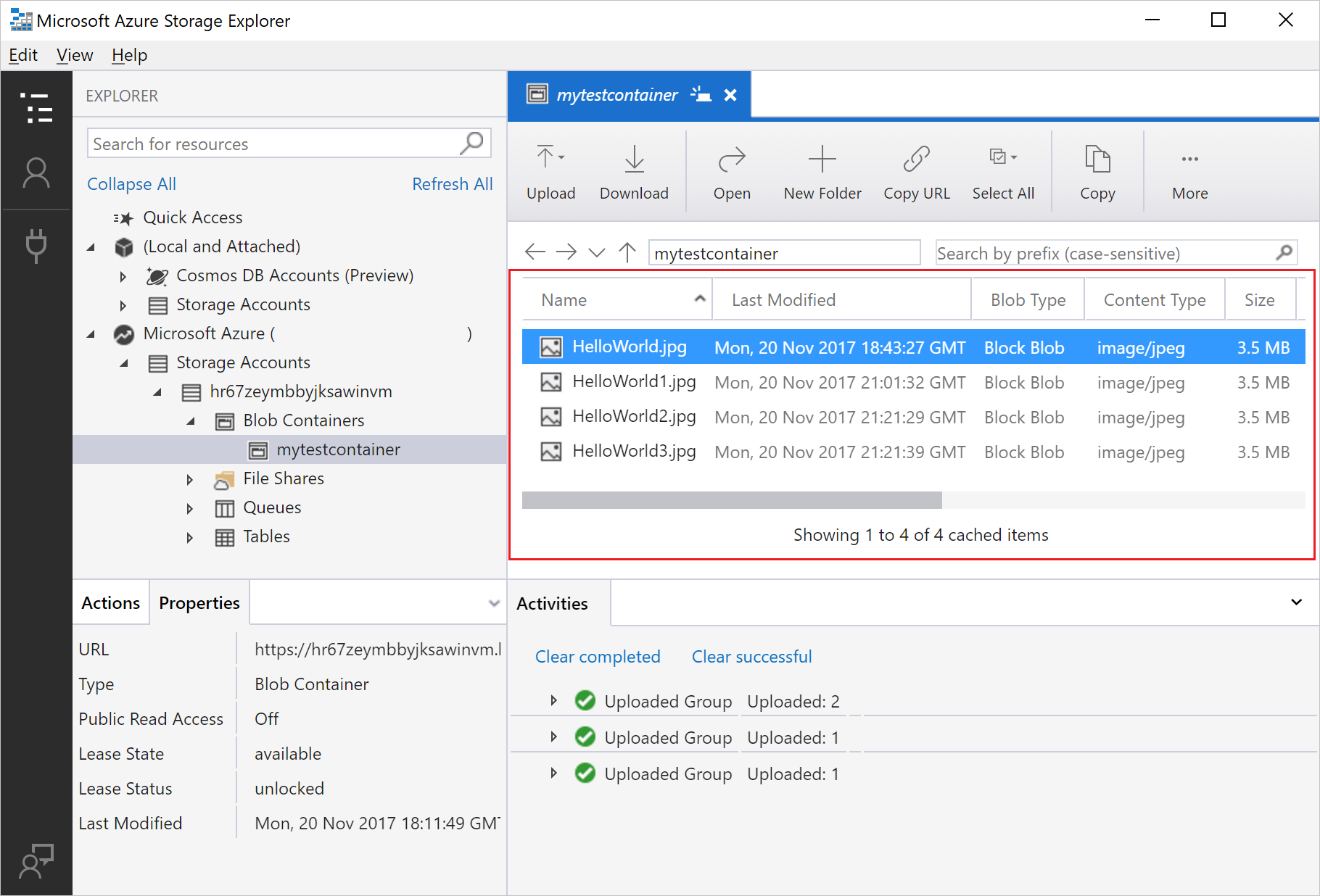Some time ago, I started working on a mobile version of the Azure Storage Explorer. The intent of this app was that anything you could do from the ASE app on Windows, MacOS, or Linux, you’d be able to do on Android and iOS. There were a few different reasons I wanted to build this. Microsoft Azure Storage Explorer enables you to easily work with Azure Storage data safely and securely on Windows, macOS, and Linux. By following these.
-->
Azure Files is Microsoft's easy-to-use cloud file system. Tools pro for mac. Azure file shares can be mounted with the industry standard SMB 3 protocol by macOS High Sierra 10.13+. This article shows two different ways to mount an Azure file share on macOS: with the Finder UI and using the Terminal.
Upload, download, and manage Azure blobs, files, queues, and tables, as well as Azure Cosmos DB and Azure Data Lake Storage entities. Easily access virtual machine disks, and work with either Azure Resource Manager or classic storage accounts. Manage and configure cross-origin resource sharing rules. Easily manage Storage anywhere from Windows, macOS, and Linux Access multiple accounts and subscriptions across Azure, Azure Stack, and the sovereign Cloud Create, delete, view, and edit storage resources View and edit Blob, Queue, Table, File, Cosmos DB storage and Data Lake Storage Obtain shared access signature (SAS) keys Available for Windows, Mac, and Linux. Azure Storage Explorer helps you upload, download, and manage the data you store in Azure Storage. This month we released version v1.18.0 which includes the following new capabilities: Decrease startup and load time of Storage Explorer. New connection flow to make it easier to specify the type of resource.
Azure Storage Explorer Application Download
Prerequisites for mounting an Azure file share on macOS
Storage account name: To mount an Azure file share, you will need the name of the storage account.
Storage account key: To mount an Azure file share, you will need the primary (or secondary) storage key. SAS keys are not currently supported for mounting. Mac os x for android.
Ensure port 445 is open Adobe photoshop cc 2014 for mac os. : SMB communicates over TCP port 445. On your client machine (the Mac), check to make sure your firewall is not blocking TCP port 445.
Azure File Explorer
Mount an Azure file share via Finder
Open Finder: Finder is open on macOS by default, but you can ensure it is the currently selected application by clicking the 'macOS face icon' on the dock:
Select 'Connect to Server' from the 'Go' Menu: Using the UNC path from the prerequisites, convert the beginning double backslash (
) tosmb://and all other backslashes () to forwards slashes (/). Your link should look like the following:Use the storage account name and storage account key when prompted for a username and password: When you click 'Connect' on the 'Connect to Server' dialog, you will be prompted for the username and password (This will be autopopulated with your macOS username). You have the option of placing the storage account name/storage account key in your macOS Keychain.
Use the Azure file share as desired: After substituting the share name and storage account key in for the username and password, the share will be mounted. You may use this as you would normally use a local folder/file share, including dragging and dropping files into the file share:

Mount an Azure file share via Terminal
Replace
<storage-account-name>,<storage-account-key>, and<share-name>with the appropriate values for your environment.Use the Azure file share as desired: The Azure file share will be mounted at the mount point specified by the previous command.
Next steps
Microsoft Azure Storage Explorer helps you upload, download, and manage Azure blobs, files, queues, and tables, as well as Azure Cosmos DB and Azure Data Lake Storage entities. Easily access virtual machine disks, and work with either Azure Resource Manager or classic storage accounts. Manage and configure cross-origin resource sharing rules
Features:
- Management for all your storage accounts and multiple subscriptions across Azure, Azure Stack, and government cloud
- Accessible, intuitive, feature-rich graphical user interface (GUI) for full management of cloud storage resources
- Robust security features like cross-origin resource sharing and shared access signature to help protect your data access wherever you are
- Ease cloud storage management and boost productivity - Efficiently connect and manage your Azure storage service accounts and resources across subscriptions. Create, delete, view, and edit resources in Azure Storage, Azure Cosmos DB, and Data Lake Storage
- Powerful, accessible experience - Seamlessly view, search, and interact with your data and resources using an intuitive interface. Support accessibility with multiple screen reader options
- Work your way, on-premises or offline - Storage Explorer lets you work disconnected from the cloud or offline with local emulators. This flexibility helps you boost productivity and efficiency, and reduce costs
- Tighten up data access - Use the full range of Azure security features, including role-based access control, Azure Active Directory, and connection strings, to connect and manage your Azure resources-always over HTTPS
